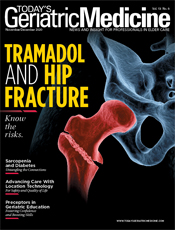
November/December 2020
Long Term Care: How Surface Testing Empowers Long Term Care Communities Since February, COVID-19 has claimed the lives of more than 170,000 people in the United States. In particular, long term care communities and nursing homes have faced an unprecedented challenge. According to the Kaiser Family Foundation, adults age 65 and older on average account for 80% of COVID-19 deaths, despite comprising only 16% of the US population. When it comes to COVID-19 infection control, senior and long term care communities have been struggling to overcome a slew of hurdles, both internal and external. Constant monitoring of each community and rapid access to testing are the pillars of current regulatory mandates. Yet the inability to enforce testing requirements for asymptomatic outside providers—compounded by lackluster funding and delayed COVID-19 test results—have contributed to deadly outbreaks in long term care communities across the country. That’s because most communities focus on detecting symptoms such as cough and fever, which does not address the high infectivity of nonsymptomatic carriers, who may represent nearly one-half of individuals with COVID-19, according to the Centers for Disease Control and Prevention (CDC). The response to the COVID-19 outbreak has been complicated by the short supply of personal protective equipment (PPE) and insufficient access to human testing resources. Additionally, the vast number of asymptomatic spreaders renders symptom-based screening programs glaringly ineffective. This has been illustrated multiple times in recent months, with large outbreaks happening in schools and businesses that enforced CDC infection control recommendations, including numerous and regular hand washing practices, mandatory face coverings, and social distancing. A solution that provides effective environment-based virus surveillance, coupled with human testing, could address all of these issues. Surface and Environmental Viral Testing Surface testing for viruses has been used for more than a decade and has been brought to bear in the COVID-19 pandemic in acute care settings. During the present outbreak, surface testing has been used in hospital environments to study the distribution of virus in COVID-19 wards. The CDC and the World Health Organization both acknowledge the value of surface testing as a tool in the arsenal to fight COVID-19. Data from a five-week study performed exclusively in long term care facilities (nursing homes, memory care, and community-based care) shows that surface testing is a valuable surveillance tool that can provide early warning of viral outbreak in the environment of a vulnerable population. The study also highlights that using surface testing to sample as few as eight high-touch surfaces in medium and large communities can be sufficient to correctly detect whether the COVID-19 virus was introduced in the community at least five days prior to any symptoms appearing in the infected individual(s). Such a lead time allows facility leaders to properly prepare for a possible outbreak by adjusting staff planning and PPE supplies. Communities that adopted surface testing as a surveillance tool to detect the COVID-19 virus before symptoms occur have used the results to improve their sanitization and monitoring standards. They also report that integrating surface testing into their infection control protocols has generated a heightened sense of safety from residents and their families. The reliability of those tests also provides financial relief, as communities use positive surface testing results to help guide the frequency and breadth of human testing by identifying the parts of their communities that are affected. Indeed, surface testing is a critical part of a strong infection control program in conjunction with human testing, good PPE practices, and regular disinfection and cleaning. Not only do the two testing strategies complement each other but neither takes laboratory resources away from the other. In addition, the invasiveness of current human test methods makes them particularly difficult to tolerate for memory care residents and creates a psychological fatigue for staff and family members who are subjected to it on a regular basis. Although noninvasive COVID-19 tests such as saliva tests are coming to market, naso-pharyngeal tests remain the most commonly available. Implementing Viral Environmental Testing Gathering samples for each selected surface can take less than a minute. Selecting which surface will undergo testing every week depends on each facility's architecture and organization. Typically, surfaces touched regularly by staff members and outside providers, such as medication carts, employee clocks, door handles, and staff computers, should be tested weekly. Selecting the proper surface test provider is of paramount importance, and community leaders should take certain criteria into account. Because surface testing should be performed repeatedly, the sampling process must be rapid, straightforward, and carried out by staff members of the communities with minimal to no training, rather than involving recurring visits from outsiders. Another crucial aspect to consider is how fast testing results will be available, regardless of the incidence of COVID-19 cases in a particular area. Some surface test providers are able to consistently deliver test results within 24 hours, regardless of the amplitude of outbreaks in the communities. The necessity of viral environment testing will exist beyond the COVID-19 pandemic. Viral infections are among the most common causes of death in elder communities, and outbreaks of the flu and norovirus are particularly common. Surface tests will need to adapt to detect these viruses and other common, yet potentially lethal, viral infections. Constant environmental surveillance can help detect those viruses as soon as they are introduced in the communities, reducing outbreaks, avoiding lockdowns, and providing decision makers with critical data. Families are more involved than ever in making sure that their loved ones are safe; rest assured they will thoroughly evaluate the safety precautions and infection control protocols as key criteria to select a long term care community. — Yoanne Clovis, PhD, is the marketing lead at Enviral Tech, a provider of environment-based viral tests for the long term care industry. |
